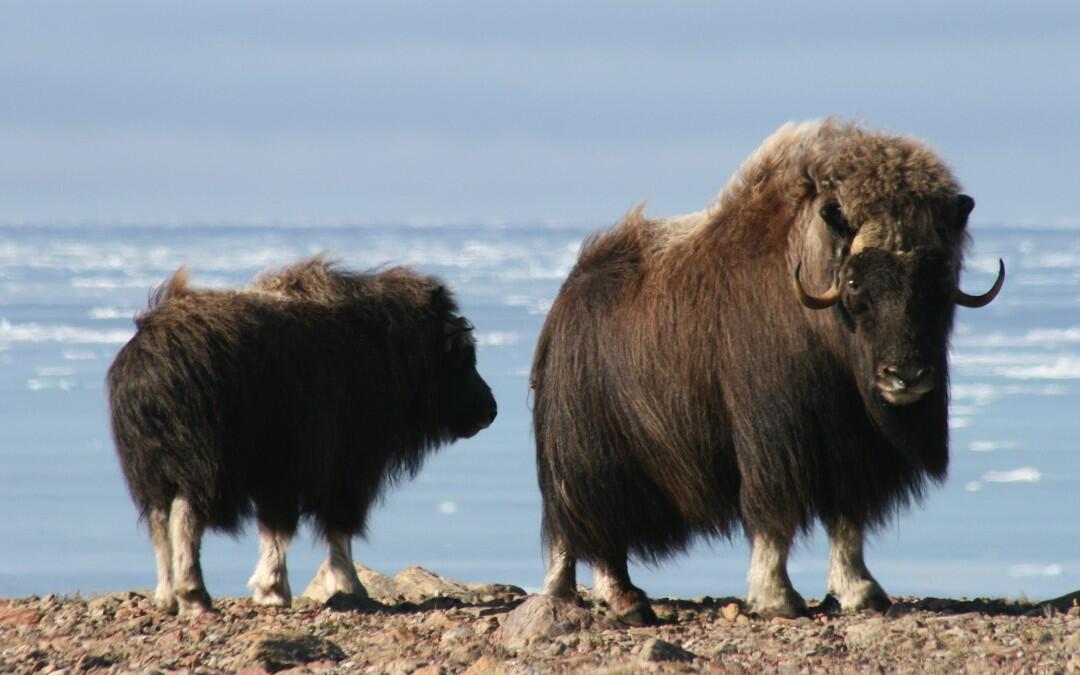As members of the subfamily Caprinae of the family Bovidae, muskoxen are more closely related to sheep and goats than to oxen; however, they are placed in their own genus, Ovibos (Latin: “sheep-ox”). The muskox is one of the two largest extant members of Caprinae; along with the similarly sized takin. While takin and muskox were once considered possibly related, the takin lacks common ovibonine features, such as the muskox’s specialized horn morphology, and genetic analysis shows that their lineages actually separated early in caprine evolution.
The modern muskox is the last member of a line of ovibovines that first evolved in temperate regions of Asia and adapted to a cold tundra environment late in its evolutionary history. Muskoxen ancestors with sheep-like high-positioned horns (horn cores being mostly over the plane of the frontal bones, rather than below them as in modern muskoxen) first left the temperate forests for the developing grasslands of Central Asia during the Pliocene, expanding into Siberia and the rest of northern Eurasia. Later migration waves of Asian ungulates that included high-horned muskoxen reached Europe and North America during the first half of the Pleistocene. The first well known muskox, the “shrub-ox” Euceratherium, crossed to North America over an early version of the Bering Land Bridge two million years ago and prospered in the American southwest and Mexico. Euceratherium was larger yet more lightly built than modern muskoxen, looking like a giant sheep with massive horns, and preferred hilly grasslands.
In modern times, muskoxen were restricted to the Arctic areas of Canada, Greenland, and the United States. The Alaskan population was wiped out in the late 19th or early 20th century. Their depletion has been attributed to excessive hunting, but an adverse change in climate may have contributed. However, muskoxen have since been reintroduced to Alaska. The United States Fish and Wildlife Service introduced muskox onto Nunivak Island in 1935 as a means for subsistence living.











